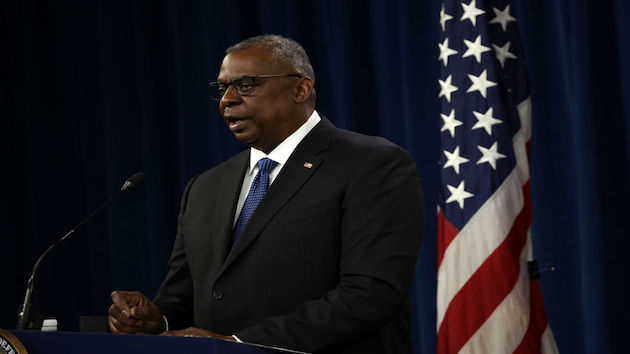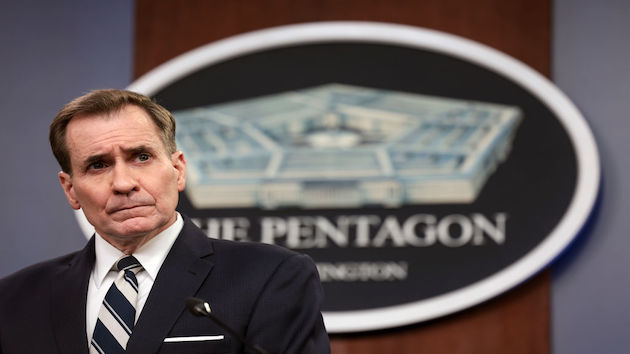
(NEW YORK) — Jack Petocz, a student activist in Florida, led his peers on a school walkout last week in protest of what many call the “Don’t Say Gay” bill, which was passed by the state legislature on Tuesday.
The Florida bill would limit what educators in the state can teach about sexual orientation and gender identity inside some classrooms.
Under this legislation, these lessons “may not occur in kindergarten through grade 3 or in a manner that is not age-appropriate or developmentally appropriate for students in accordance with state standards.” The bill is now headed to Gov. Ron DeSantis’ desk.
“Queer people aren’t inherently not age-appropriate,” Petocz told ABC News Live on Wednesday. “Our existence fosters a more inclusive environment.”
What started as a peaceful way for young people to rally against the bill turned into a school suspension for Petocz. He said that just before the protest was about to start, he was pulled to the side by administrators voicing their opposition against students waving the pride flags that Petocz had purchased on his own for the event.
“My school district tried to prevent us from giving out pride flags and distributing them,” Petocz said. “I resisted, and I told students to not give up their pride flags, because they’re a symbol of our identity. They’re a symbol of acceptance and embrace of our queerness.”
Petocz said at least a dozen schools participated in walk-outs. Protests have also taken place across the state in the form of written letter campaigns, petitions and rallies.
Activists across the state and nation are making final pleas to DeSantis before he decides whether or not to sign the bill into law.
DeSantis has signaled his support for the bill but has not yet said whether he will sign it. Supporters of the bill say they want parents to have more control over what is being taught in the classroom.
“I call on Gov. DeSantis to have a meeting with me before he signs this into law to hear a firsthand account of how this bill will affect my community,” Petocz said.
Rep. Joe Harding, the bill’s sponsor, told ABC News, “Families are families. Let the families be families. The school district doesn’t need to insert themselves at that point when children are still learning how to read and do basic math.”
But for many of these students, political measures like these are personal attacks, according to Sarah Kate Ellis, the president and CEO of the Gay and Lesbian Alliance Against Defamation (GLAAD). Over 21% of Generation Z identifies with the LGBTQ community, a recent Gallup poll found.
“It’s becoming a war zone for them,” Ellis said in an interview with ABC News Live on Wednesday morning.
“Why are we even discussing this?” Ellis asked. “What this does at the end of the day is politicize LGBTQ people who just want to go to school, learn how to read and write, and every now and then want to see their families represented as well.”
Ellis, who is gay, is a mother to young children and told ABC News that children’s books with two moms were her children’s favorite stories to read growing up. She said that this bill would prevent children with LGBTQ parents from being able to relate lessons to their own lives at home.
She pointed to other anti-LGBTQ bills that have been proposed this year, calling it a “coordinated effort” by conservative legislators. Bills targeting the community have popped up in other iterations — including bans against gender-affirming care for trans youth being proposed in Idaho and Alabama and bans on trans participation in women’s sports in Iowa and Indiana.
“These politicians are taking this opportunity to raise money for themselves and using our children and classrooms to create divisions,” Ellis said.
Equality Florida, a local organization that has been organizing many of the protests against the bill, said that it will “not allow this bill to harm LGBTQ Floridians.” The organization argues that removing LGBTQ content from classrooms creates an environment of exclusion and oppression against queer youth.
“Lawmakers rejected the voices of tens of thousands who sent emails and made phone calls asking for them to put a stop to this bill, thousands of courageous students who walked out of class, hundreds of people who testified before their bodies, dozens of child welfare organizations and leaders who spoke up to name the harms of the bill and their own Republican colleagues who refused to support it,” the organization said in a statement.
“Instead, they locked arms with the angry mobs hurling anti-LGBTQ slurs at those asking for nothing more than a safe place to go to school without having to hide who they are,” the statement read. “Our fight for full equality continues.”
Copyright © 2022, ABC Audio. All rights reserved.









